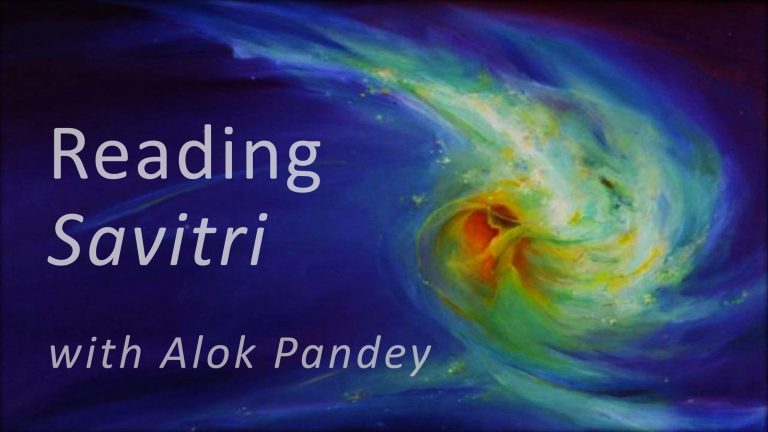Ravana is in fact a Brahmin coming from a high priestly class, someone who has done a detailed study of the Vedas and has even been instrumental in spreading the Vedas. He is a devotee as well, however he belongs to a class or type of bhaktas whose devotion is tainted with ego and ambition. They long to appropriate the Deity whom they worship in a way as to hold exclusive rights in much the same way as some religions do and thereby become a breeding ground for fundamentalism. Or else these devotees are in search of power and their worship and penance and religious observances are all driven by a lust for power, even the ultimate power if possible so that they can remain the uncontested sovereign of the world. Such a devotee is Ravana. He is a pundit, a scholar, even an accomplished poet and music lover. He is sometimes portrayed as playing the difficult Vina, and his famous composition on Lord Shiva, his chosen Deity, Rudrastakam is well known. That the Rudrastakam of Ravana is still looked upon as a beautiful hymn in praise of Lord Shiva is a sign of the Aryan Society which, keeping in tune with the Vedas accepted great ideas regardless of the origin. The world of ideas belongs to nobody and if it is good and true and beautiful it can find its rightful place regardless of the person through whom it came into existence.
The mighty king of Lunca has accumulated various kinds of powers harnessing all the elements and forces of nature and also looks after his subjects very well. Such is the opulence of ancient Lunca that its houses had gold-tipped domes and it was the only kingdom to possess a flying machine, called the Pushpak Vimana. Yet for all his material development and technological advancement he leads his kingdom to ruin by following the path of adharma. This is indeed a lesson of history that is as much valid today as yesterday. Clearly the story also reveals to us that it is not your circumstances of birth that make you great but what you eventually do with your life, your actions so to say. The Rakshasa and Asura is clearly not a surname or decided by birth but something into which man can grow so much so that even a deva type can degenerate into an Asura even as an Asura can evolve into a deva type as the story of his brother Vibhisana indicates. It is this among other things that make the Ramayana so contemporary. It is, like the Mahabharata, truly a history, a history that repeats itself unless we have learnt its lessons well.
 If Ravana represents one class of humanity that would use everything including religion and worship as a cloak to cover up its ambitions, Vibhisana represents the kind of bhakta who by his force of devotion can be converted from his Asuric birth to a diviner status, The rigid distinctions that we sometimes draw between the Devas and Asuras was clearly not so distinct in ancient times. Originally a divine being, Ravana’s life reveals, among other things that there is an Asura concealed within us and no matter how close we may seem to the Lord, outwardly so to say, – Ravana and Kumbhkarna were dwarpal (gatekeepers) of Lord Vishnu, yet if we allow ego to take the better of us then this is bound to spell ruin. On the other hand there is Vibhisana who is also with the Asuras by birth and yet he has kept himself aloof from the misdeeds of his brother. It speaks of a man’s character when he does not succumb to the influences of family and society but follows what he believes to be the right things to do and speaks his mind freely even if it means being cast out from his kingdom and comfort zones of family. Such a person regardless of his birth is an adhikari (deserving and fit) for the friendship with the Lord. Thus we see here that the distinction which the Ramayana draws between two types of humanity is not based on birth and beliefs, least of all on colour of the skin and language but on only one thing, – and that is what differentiates the Aryan from the un-Aryan (that is how the scriptures distinguish these two types, a deep truth that was later deliberately presented as Aryan and Dravidian), is that subtle and yet clear line between dharma and adharma. It is subtle because dharma is not defined as a rule book prescribing certain do’s and don’ts. It is something to be felt within our soul which is truly the seat of dharma and not the mind that tends to draw a line dividing black and white. But what is unclear to the mind is clear to the evolving soul of man. We see this great importance given to dharma at every step in Indian spirituality. Yet knowing that it is subtle in nature it has presented to us various examples to bring home the point. The Ramayana itself touches upon this with a subtlety and fineness that is rare to find elsewhere.
If Ravana represents one class of humanity that would use everything including religion and worship as a cloak to cover up its ambitions, Vibhisana represents the kind of bhakta who by his force of devotion can be converted from his Asuric birth to a diviner status, The rigid distinctions that we sometimes draw between the Devas and Asuras was clearly not so distinct in ancient times. Originally a divine being, Ravana’s life reveals, among other things that there is an Asura concealed within us and no matter how close we may seem to the Lord, outwardly so to say, – Ravana and Kumbhkarna were dwarpal (gatekeepers) of Lord Vishnu, yet if we allow ego to take the better of us then this is bound to spell ruin. On the other hand there is Vibhisana who is also with the Asuras by birth and yet he has kept himself aloof from the misdeeds of his brother. It speaks of a man’s character when he does not succumb to the influences of family and society but follows what he believes to be the right things to do and speaks his mind freely even if it means being cast out from his kingdom and comfort zones of family. Such a person regardless of his birth is an adhikari (deserving and fit) for the friendship with the Lord. Thus we see here that the distinction which the Ramayana draws between two types of humanity is not based on birth and beliefs, least of all on colour of the skin and language but on only one thing, – and that is what differentiates the Aryan from the un-Aryan (that is how the scriptures distinguish these two types, a deep truth that was later deliberately presented as Aryan and Dravidian), is that subtle and yet clear line between dharma and adharma. It is subtle because dharma is not defined as a rule book prescribing certain do’s and don’ts. It is something to be felt within our soul which is truly the seat of dharma and not the mind that tends to draw a line dividing black and white. But what is unclear to the mind is clear to the evolving soul of man. We see this great importance given to dharma at every step in Indian spirituality. Yet knowing that it is subtle in nature it has presented to us various examples to bring home the point. The Ramayana itself touches upon this with a subtlety and fineness that is rare to find elsewhere.



